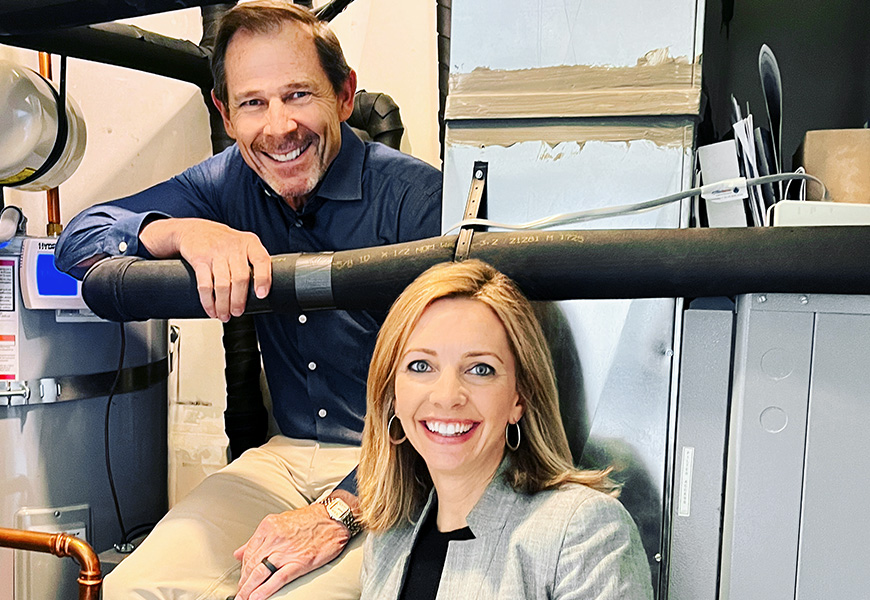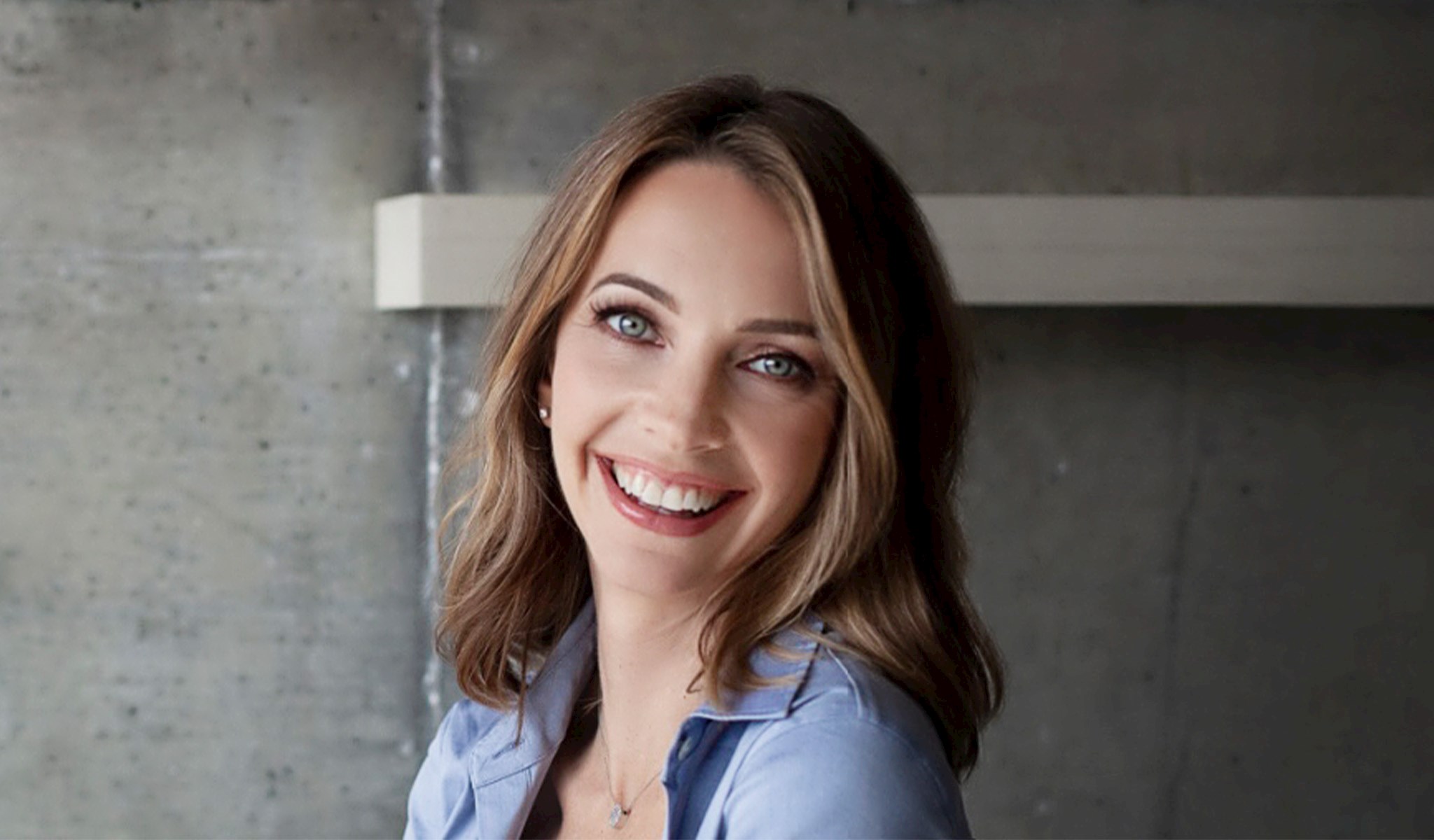Emmy-award winning broadcast executive and entrepreneur Anna Robertson is a passionate storyteller, telling stories that shape people’s lives.
From working with legendary journalist Diane Sawyer, covering some of the most important stories of our times including 9/11, the Iraq War, and Hurricane Katrina to launching a new-wave media company, Robertson has over two decades of experience on the front line of change in the media business.
She was with Sawyer at Ground Zero shortly after the collapse of the two towers at the World Trade Center on September 11, 2001. She will never forget how lives were disrupted, particularly those of mothers and soon-to-be mothers who lost their husbands, raising their 9/11 babies without their dads.
Robertson covered the war in Iraq from before it started, during a time of not knowing whether there were weapons of mass destruction. In New Orleans, she experienced how quickly Mother Nature can devastate communities and families when a massive hurricane lands on an unprepared city.
In recent years, she has felt called to tell the stories of the underrepresented, those not covered much by mainstream media.
In 2020, Robertson was based in Los Angeles in charge of content and partner innovation for ABC’s eight owned television stations, which served some of the nation’s largest U.S. cities. She and her team of journalists were witnessing first-hand the vast inequities diverse communities were experiencing amid the COVID crisis. But what they were missing was data to fuel innovative local reporting.
Hidden Stories in Plain Sight
So they took on an ambitious data journalism project to launch ABC’s Equity Report. It is an interactive database of race-based disparities across housing, health, education, policing, and the environment of the 100 largest U.S. cities. It fuses 10 million data points into a scorecard to measure racial equity.
“When we thought about the issue of equity, and our desire to really reflect the diverse communities that we serve, we thought, nobody’s really looking holistically across multiple areas of focus and across multiple data sets to give us a picture of how equitable or inequitable our communities are,” says Robertson.
“We discovered the data was essentially validating the experiences people were having.”
The project led to a series of reports and investigations, including an Emmy-award winning documentary examining racial bias in home appraisals, Our America: Lowballed, which resulted in new laws in several states, regulations at the federal level, and justice for the some of the families affected.

Robertson’s experiences with the Equity Report inspired her to reevaluate her career and life.
She was working on a special for Hulu called Climate of Hope—a story about extreme weather conditions and climate change told through the eyes of local meteorologists across the country and experts with National Geographic. The documentary explored the impact of climate change in America on local communities, and it provided signs of hope, amazing discoveries to improve the climate that people didn’t know about.
Robertson and her family also experienced the effects of a changing climate when raging California wildfires forced them to evacuate their Los Angeles home in the middle of the night.
“I just felt this calling to do what I could with the talents and the experiences that I have as a storyteller and communicator to engage more people on the topic of climate,” she says.
The Cool Down
She moved from the West Coast with her husband and two young children to Park City, Utah, and soon afterwards connected with Dave Finocchio, co-founder of the successful sports site Bleacher Report. He shared Robertson’s vision to develop a mainstream climate brand aimed at making it easier for people to understand climate change and not give up hope—that they could make a difference and help create a cleaner, cooler world.
In 2022 they launched The Cool Down, the first mainstream climate brand, offering a mix of stories on climate, the latest product innovations to reduce environmental impact, and resources on how people can live and shop healthier and more sustainably.
Anytime we’ve had to do something hard in history, we’ve needed mainstream America to be engaged.
ANNA ROBERTSON
Its information and products offer ideas that people can embrace to change their lives, without being overwhelmed. Robertson cites an interview she recently had with Rep. John Curtis (R-UT), who gave The Cool Down a tour of his climate-friendly house as an example. In the video, Curtis shows off his attic insulation, LED light bulbs, solar panels, geothermal heat pump, and brags that he is saving thousands on his utility bills.
“If we can be a guide for mainstream America to start their journey towards living more sustainably, and help businesses reach more customers to make these changes in their lives, that would be hugely impactful,” Robertson says. “Anytime we’ve had to do something hard in history, we’ve needed mainstream America to be engaged.”
Distributed across the web, on Instagram, and through two weekly newsletters, The Cool Down has grown quickly, becoming the fastest growing digital media brand in the last year and was recognized as one of Fast Company magazine’s most innovative companies of 2023 in the media category. Only 11 months after going live in July 2022, The Cool Down reached over 14 million people a month and had over 31 million visits.
“We are definitely reaching that mainstream audience and showing that we can drive real interest in climate topics,” she says. “On the back end, we have also built a priority data platform with millions of data points that gives us a clearer picture of what mainstream America is actually interested in and engaging with.”
Robertson says The Cool Down plans to make that data available to businesses, marketers, and communicators who want to reach mainstream consumers around sustainability as part of a new B2B offering rolling out this year.
“We need to bring more people into the conversation.”



